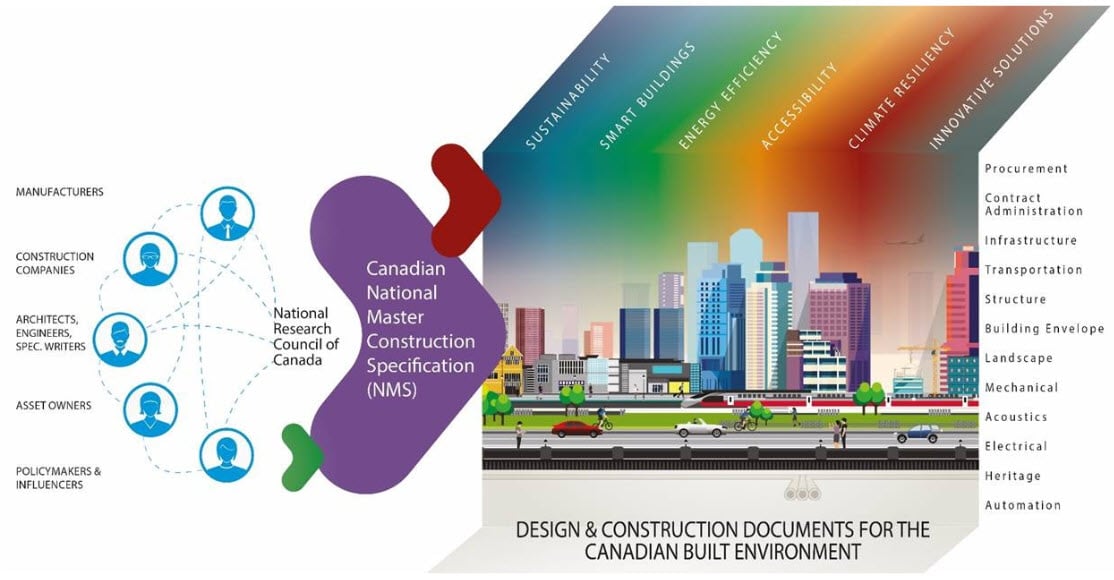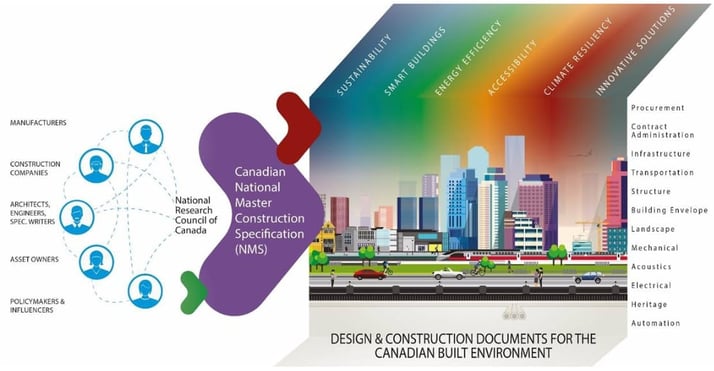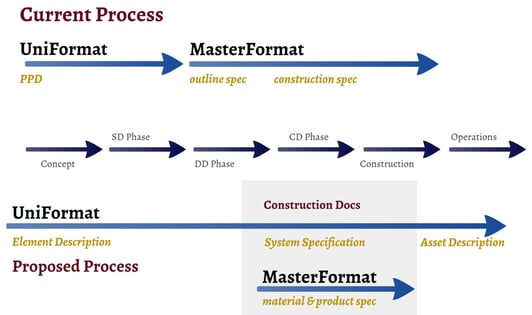
In early 2017 David Stutzman met Jason Urquhart of the National Research Council (NRC) of Canada at Construction Specifications Canada national conference in Kalowna, BC, and a new friendship was established with our neighbor to the north. Jason is a P.Eng. and the manager of the Canadian National Master Specifications (NMS) who approached David with the discussion of Preliminary Project Descriptions (PPD) and UniFormat™ and how they could benefit their national standards. As a member of CSC - Construction Specification Canada, he is no stranger to the concept. Their discussion became a collaboration as ideas went back and forth across the boarder. The ideas became validated and solutions formed, and it was obvious that flexibility of PPDs have application at a national level and this should be shared with the industry. In the fall of 2018, at CONSTRUCT in Long Beach, CA, David and Jason co-presented "Closing the Gap - Performance to Work Results through New Tools & Master Specifications", sharing how NMS communicates performance and design criteria from the early stages of the project to construction documents.

Priory to CONSTRUCT, NRC of Canada contracted Conspectus in early 2018 to update their master performance and design specifications organizing the content in UniFormat. Who better to write these documents, none other than senior specifier, Louis Medcalf? Louis led the CSI (Construction Specification Institute) PPD Task Team and was on the UniFormat Task Team, on the Institute level. He was the perfect fit for authoring federal documents in this format. References for energy efficient and net zero operational carbon build design and operation were introduced into 37 Sections across Element B and D to G, within the specifications. The updates were released in the first quarter of 2021, and posted on the NMS site. Read the updates to prescriptive specifications on their site.
The ultimate decision to organize the content in this format aides in the implementation of Canadian policy for sustainability, greenhouse gas emissions, resiliency, and other areas.
Our perspective on PPD and UniFormat, as specification writers, is different than how the Canadian federal government uses it. We look at it as a decision-making tool that assists the entire project team through the process. UniFormat is a method of arranging construction information based on functional elements, such as systems and assemblies, not materials and methods. Therefore broad decisions can be discussed and made at the very start of a project. As these decisions are made, they can be brought into the documentation and build the specification throughout the process, instead of an information dump at the end. Read our blog on UniFormat as a design decision-making tool here.
Conspectus and Canada can both agree that PPD and UniFormat are the ultimate solutions as an organizational method to document performance and design criteria to ensure compliance with owner objectives.
Traditional specification workflows hinder design collaboration of construction teams, especially with ever-changing project delivery systems. Consistently organizing BIM, specification, and estimate data by the same means will improve understanding of each project element and, therefore, the entire project. Aligning, and directly connecting the project description, model, and specification provides an effective means for simultaneous analysis of costs relative to function, performance, and materials.

Every country, owner, and project team can experience the flexibility and customization of decision making and documentation through UniFormat and PPDs.
